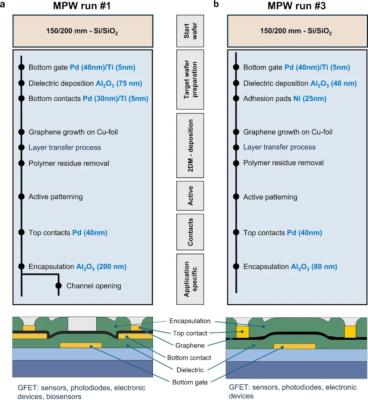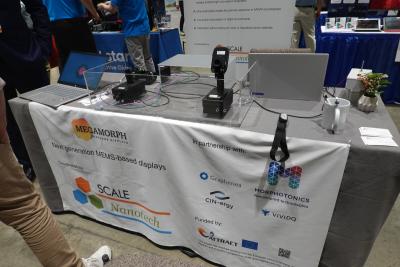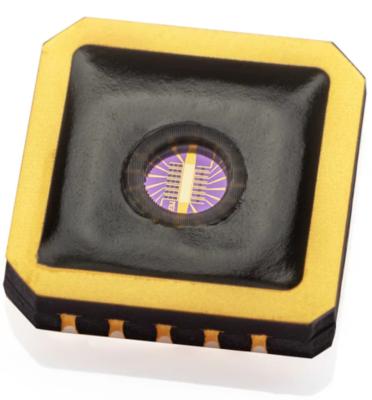![]() Graphenea, a technology company founded in 2010, is a leading graphene producer.
Graphenea, a technology company founded in 2010, is a leading graphene producer.
Graphenea focuses on contributing to the successful development of Graphene applications of its customers, in a wide range of sectors and in more than 60 countries in the world. Through research and innovation, it supports its customers with a portfolio consisting of: CVD Graphene films, Graphene Field-Effect-Transistors chips (GFETs), Graphene Foundry Services (GFAB) and Graphene Oxides. Graphenea’s facilities are located in Spain (San Sebastián) and USA (Boston)
In 2020 Graphenea launched a dedicated Graphene Foundry. The company can take care of CVD graphene synthesis, transfer and device fabrication and deliver a fully tested graphene-based chip to the customer. This service reduces product development time and costs and Graphenea offers a reliable supply of graphene-based chips from prototyping to scale production.
Paseo Mikeletegi 83
20009 San Sebastian
Spain
2D-EPL project reports results of two multi-project wafer runs
Researchers from AMO, Graphenea and RWTH Aachen University have, as part of the European experimental pilot line for electronic and optoelectronic devices based on graphene and related two-dimensional (2D) materials, namely the Experimental Pilot Line (2D-EPL) project, reported the results obtained during the first and third multi-project wafer (MPW) runs completed at the end of 2022 (MPW run 1) and 2023 (MPW run 3).
The Experimental Pilot Line (2D-EPL) project, that aims to advance the widespread commercialization of electronic devices based on graphene, published the new report that summarizes the results of two multi-project wafer (MPW) runs, utilizing electrical and spectroscopic characterization to demonstrate the high quality of production in the 2D-EPL. MPW run 1 was intended mainly for graphene-based sensors, in particular chemical and biosensors, while MPW run 3 focused on graphene electronics.
MEGAMORPH demonstrates its graphene-based display technology at Displayweek 2024
The EU-funded MEGAMORPH project, which started in 2022, demonstrated its graphene-based display technology at Displayweek 2024.
The idea behind the project is to use CVD graphene sheets (produced by Graphenea, a partner in the project) as the semi-transparent membranes in a Interferometric Modulator Display. These kinds of displays use mechanical micro-mirrors as pixels that modulate the ambient light without using power to generate light. IMOD displays are promising as they can offer very low power operation and high density displays.
Project Next-2Digits launches for next generation of sensors and imagers
A new Horizon Europe funded project was launched in October 2023. With a consortium of 11 partners from 8 different countries, the Next-2Digits project aims to develop the next generation of sensors and imagers enabled by 2D materials digital integration. Next-2Digits will run for 3 years and 3 months.
Coordinated by the National Technical University of Athens, Next-2Digits benefits from the presence of academic, research and industrial teams, whose areas of work span from graphene and 2D materials synthesis, characterization, manipulation, and integration, as well as in the fields of photonics, material science, application-based integration technologies and validation.
Researchers suggest a perovskite-graphene device for X-ray detection
Researchers at Graphenea, University of Utah and Kairos Sensors have examined a perovskite-based graphene field effect transistor (P-GFET) device for X-ray detection.
The device architecture consisted of a commercially available GFET-S20 chip, produced by Graphenea, with a layer of methylammonium lead iodide (MAPbI3) perovskite spin coated onto the top of it. This device was exposed to the field of a molybdenum target X-ray tube with beam settings between 20 and 60 kVp (X-ray tube voltage) and 30–300 μA (X-ray tube current). Dose measurements were taken with an ion-chamber and thermo-luminescent dosimeters and used to determine the sensitivity of the device as a function of the X-ray tube voltage and current, as well as source-drain voltage.
Graphenea takes part in effort to achieve ultrasensitive detection of SARS-CoV-2 spike protein using graphene field-effect transistors
Researchers from Graphenea, Ikerbasque, BCMaterials, Center for Cooperative Research in Biomaterials (CIC biomaGUNE) of the Basque Research and Technology Alliance (BRTA), University of the Basque Country UPV-EHU, University of Trieste and Universidade da Coruña recently reported a graphene field effect transistors (GFET) array biosensor for the detection of SARS-CoV-2 spike protein, using the human membrane protein involved in the virus internalisation: angiotensin-converting enzyme 2 (ACE2).
By finely controlling the graphene functionalization, by tuning the Debye length, and by deeply characterizing the ACE2-spike protein interactions, the team managed to detect the target protein with an extremely low limit of detection (2.94 aM).
Graphenea expands its mGFET product line with an integrated reservoir for biosensing in liquid
Graphenea recently upgraded its mGFET line of products with a built-in reservoir for liquids. This enhancement increases ease of use for biosensing and implementation in clinical testing and rapid screening.
The mGFET product line is designed to minimize barriers to adoption of graphene as a biosensor. The product was launched at the same time as the Graphenea Card, a socket for housing the mGFET and interfacing with measurement electronics. The addition of the built-in reservoir lets the user focus on the biochemistry, without worrying about producing the graphene or the sensor, or about interfacing.
Graphenea reports financial figures for 2022 with 34% growth rate
Graphenea recently released its financial results for 2022, highlighting an impressive growth rate and the successful launch of a new business.
Consolidated revenue for 2022 amounted to €4.18 million , reflecting a 34% year-over-year growth rate. Additionally, the Company achieved a positive EBITDA of €0.78 million , demonstrating a strong financial performance.
Graphenea launches specialty chemical spin-off Kivoro
Graphenea has launched a specialty chemicals spin off, called Kivoro. The new company will be focused on creating solutions for industrial challenges.
Graphenea will continue to operate as a graphene producer, with Kivoro taking lead on applications development in various industries like composites, construction, and more.
Graphenea reports excellent market reaction to its mGFET devices
In June 2022, Graphenea launched its latest product out of its Graphene Foundry, the mGFET, fully-packaged mini graphene-based field effect transistors.
Graphenea now updates that the market demand for these products has been excellent, and it has run out of stock. The company is now working to produce more mGFET devices and restock.
The mGFETs are Graphenea's highest value-chain products, which are manufactured and packaged in chip carriers, and can be used together with the Graphenea Card for seamless sensor development (which was released earlier in 2022, and has also seen very good reception in the industry).
Graphmatech, Graphenea, and Northvolt produce graphene oxide from recycled EV batteries
Graphmatech, Graphenea, and Northvolt have announced their success in up-cycling end-of-life EV batteries into graphene oxide at industrial pilot scale. This breakthrough uses the material left after Northvolt has extracted valuable metals and minerals. Until now, that remaining material was left as waste.
Emma Nehrenheim, Chief Environmental Officer of Northvolt, comments: The upcycling of graphene oxide from recycled batteries represents a great development in our pursuit of a sustainable battery industry in Europe. Batteries contain an abundance of valuable materials which we can recover to reduce our dependence on mining and producing fresh materials. We are proud to have contributed to this development.
Pagination
- Page 1
- Next page




